Defunding Planned Parenthood is a confusing controversy.
Both pro-life and pro-choice advocates are often misled as to what Planned Parenthood is and does. This is no surprise since Planned Parenthood goes to great lengths to paint a rosy picture of itself. The work it does is treated as unique, and its abuse is rarely given proper attention. Notably, even advocates of abortion tend to downplay Planned Parenthood’s role as the largest abortion provider in the United States. Listening to many of the group’s proponents, one could almost believe that Planned Parenthood doesn’t perform abortions at all.
In reality, Planned Parenthood is not nearly so innocent. The organization is complicit in countless abuses, and the work it does is not better than that of other healthcare providers, or even good for women’s health. It covers up sex abuse, commits financial crimes, and focuses more on politics than on healthcare. Yet, despite all this, it is still funded by taxpayers.
How Planned Parenthood Is Funded
Every year, Planned Parenthood receives roughly $618 million in tax money through various sources. This makes taxpayers easily the largest single source of income for Planned Parenthood, providing around 40% of their funding.
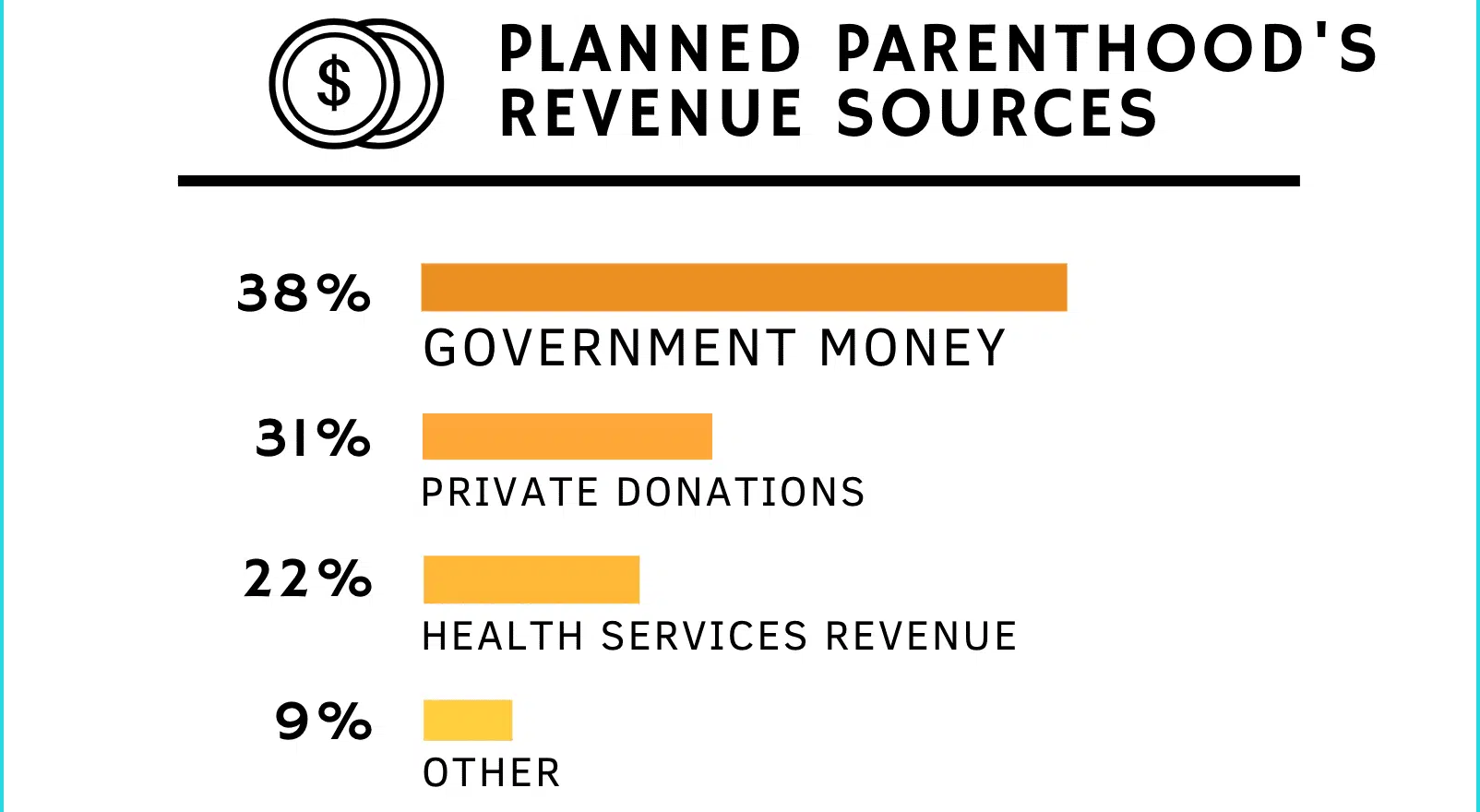
Data source: Planned Parenthood’s 2020 Annual Report
Most of this money is federal funding that comes through Medicaid and Title X. In principle, the money Planned Parenthood receives is supposed to go to select services, not abortion. In reality though, this funding is difficult to completely separate from abortion costs.
By covering some of the cost of staff, overhead, and certain services, tax money frees up other cash to be used in other areas. Planned Parenthood also uses this funding to mislead donors by a focus on government-funded services while downplaying its role in abortion.
Planned Parenthood also receives a large amount of tax money through state governments. This funding, unlike federal grants, is often used to directly pay for abortions. It’s unclear how many abortion procedures at Planned Parenthood are funded this way, but states pay for around 160,000 abortion procedures every year total.
Defunding Planned Parenthood is a general term for taking tax funding away from the organization. Rather than going to Planned Parenthood, this money would instead be spent on other women’s healthcare groups.
Planned Parenthood is mired in politics and corruption. Defunding it would free up money to support better healthcare providers and no longer be used to support the abuses that lie at the core of Planned Parenthood.
7 Reasons Why Planned Parenthood Should Be Defunded
1. Focus on Political and Administrative Spending Over Healthcare
Though Planned Parenthood’s funding has increased, their provision of most services has not kept pace. Between 2016 and 2020, taxpayer funding of Planned Parenthood increased from $554.6 million to $618.1 million, and total income increased from $1.354 billion to $1.641 billion. Yet, during this period, the number of services provided in most areas declined. Out of the 25 types of services Planned Parenthood lists in their annual report, services provided declined in 18 of them. Only abortions, STD testing, and a handful of other services increased.
In part, this is likely a result of Planned Parenthood’s growing focus on aspects of their company besides healthcare. According to its reports in 2016 and 2020, Planned Parenthood’s spending on what it classifies as medical services did increase by roughly 20%. Meanwhile, the organization increased spending
- 40% on public policy funding;
- nearly 50% on management;
- over 60% on fundraising;
- almost 120% on advocacy.
The trend we see is that Planned Parenthood’s focus is not on providing more care, but growing its influence and increasing profits. As government funding grows, Planned Parenthood spends more of its own money building up its structure and lobbying power.
2. Overbilling, Abuse, and Potential Fraud
Planned Parenthood often abuses the tax funding sources it draws from. Its financial activity has drawn the attention of state and federal auditors on many occasions. In 2017, there were records of over 50 publicly known audits of Planned Parenthood’s financial data. Almost all of these audits have uncovered overbilling, waste, abuse, and fraud.
The Charlotte Lozier Institute’s summary of these audits, for example, includes the following startling map:
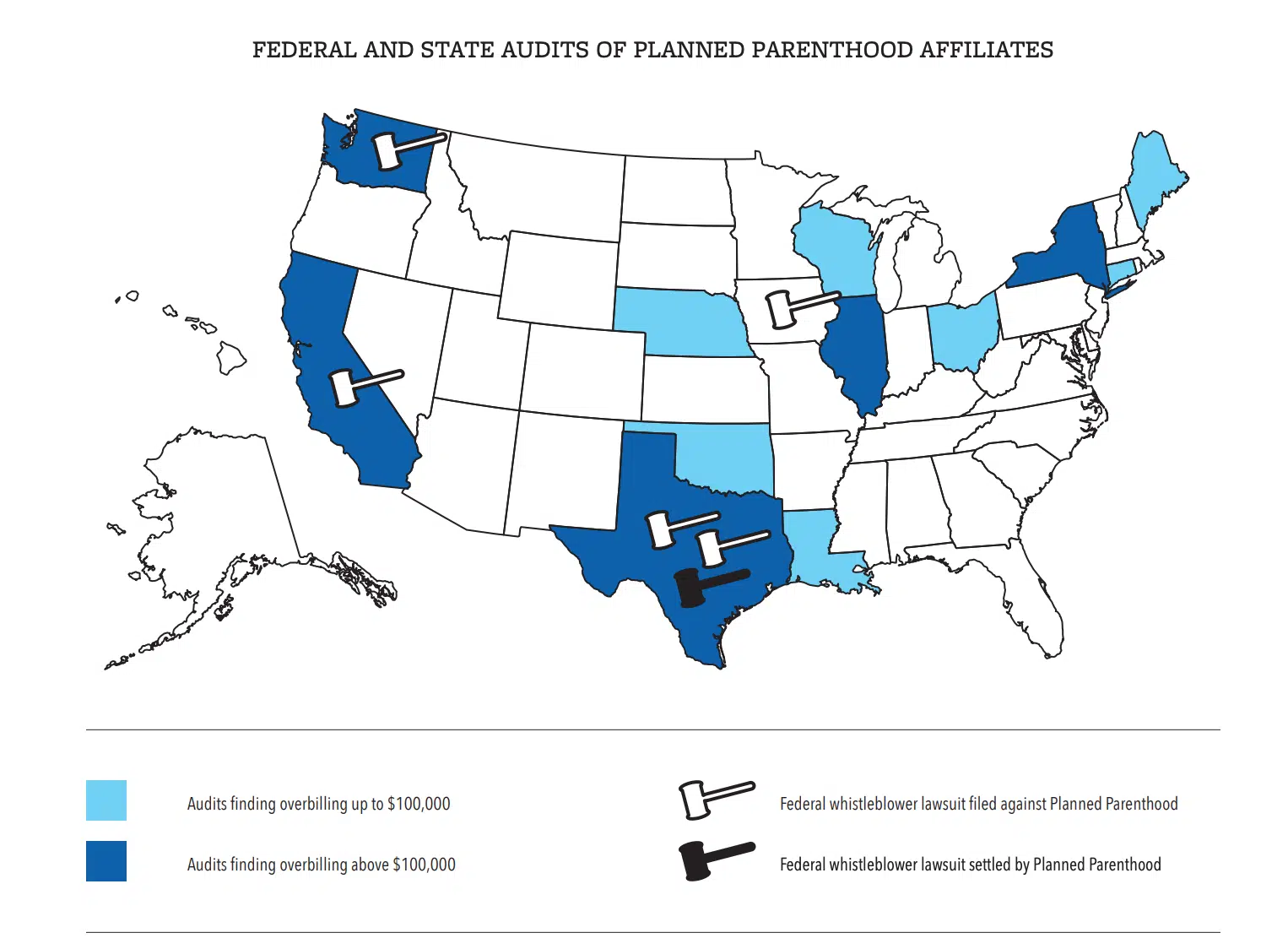
Charlotte Lozier Institute, “2017 Report on Publicly Available Audits of Planned Parenthood Affiliates and State Family Planning Programs.” January 2017.
In California, audits have found well over $5 million dollars in overbilling in a single year. Most of this $5 million came from Planned Parenthood charging the state five times as much as it cost just to purchase oral contraceptives. Even for products sold at normal pricing, Planned Parenthood billed the state for far more than the price they paid.
In Texas, audits found between $538 thousand and $658 thousand made in abuse. Time and again, Planned Parenthood took government money for contractors whom they never paid. Other audits found a Texas Planned Parenthood illegaly claiming over $129 thousand in Medicaid payments.
In New York, audits have found recurring issues at many Planned Parenthood locations. Just between 2009 and 2010, seven audits were conducted. Planned Parenthood Hudson Peconic was audited both in 2009 and in 2010. Planned Parenthood of Nasu was audited in 2010, as was the Planned Parenthood of South Central New York. The Margret Sanger Center was also audited three times in 2009. Ultimately, these audits revealed around $1.6 million in wrong payments and false claims across the four locations.
Another audit found that Planned Parenthood and other providers improperly billed Medicaid, resulting in nearly a million dollars in overbilling.
This trend seems to have continued, or even worsened, in recent years. In 2017, for example, an audit on the New York Planned Parenthood of the Southern Finger Lakes found an estimated $3.275 million in overpayments. This amount far exceeded past findings and represented over half of the facility’s state funding.
All in all, state audits have found Planned Parenthood guilty of more than $8 million dollars in overbilling, waste, abuse, and potential fraud , not including some of the more recent investigations. Federal audits have found between $88 and $99 million in overbilling, with Planned Parenthood often identified as a primary source.
3. Illegal Billing of Abortions to Medicaid
In addition to revealing financial abuse, audits of Planned Parenthood often revealed other crimes as well. Several state and federal audits detail unbundling schemes by Planned Parenthood to use taxpayer money to fund parts of abortions without needing to charge for the abortion itself.
These unbundling schemes often involve charging certain abortion-related services to the government, but not the abortion itself. Such services include the drugs used for the abortion, counseling visits, or even pre-abortion exams. One such instance of this happened in Washington, where an audit found that medications provided as part of abortions had been billed to the state. These medication, prescription drugs being provided without prescriptions, and other violations amounted to around $630,000 in extra billing.
In some cases, it appears that Planned Parenthood simply billed the state for the abortions directly. In New York, it was found that abortions were being directly reimbursed and services relating to abortion were being unbundled and charged to the government. For one provider, 25/25 of the procedures sampled in the audit were found to be abortions that shouldn’t have been paid for. All in all, the results of these audits would indicate that in four years, hundreds of thousands of abortions were illegally paid for by taxpayers.
Planned Parenthood’s unbundling schemes also help disguise their focus on abortion. The organization treats things like ultrasounds, drugs, and “going home” packages administered along with abortions as services separate from the abortions, making the number of abortions seem less significant. By doing so, Planned Parenthood disguises the true nature of its business and asserts that abortion is just a small portion of what it does.
4. Devastating Women’s Health
Forcing taxpayers to pay for something that a large portion of them view as murder is problematic in itself. Setting aside the ethical issues, however, the effects of state sponsorship of abortion—a very risky procedure—have been shown to be disastrous for mothers.
Currently, 17 states use taxpayer money to help pay for elective abortions:
In 2015, these states’ spending amounted to about $71 million on about 157,000 abortions. This means that state governments paid for about a quarter of the 638,000 abortions in 2015.
In the absence of public funding, abortions do decrease. Studies in the Journal of Health Economics, Family Planning Perspectives, and BMC Women’s Health have all found that the number of abortions decreases by about a third when not state-sponsored. Instead, more pregnancies are carried to term and the child is left alive.
What’s more, state sponsorship of abortion also increases unplanned pregnancies. When abortion is made less easily available, financially or otherwise, evidence suggests that greater care is taken to avoid pregnancy. Indeed, research in the Journal of Health Economics found that the effect of cutting funding is large enough that the number of births decreases despite drops in the abortion rate.
Most troubling, however, is that the dangers of public funding for abortion may go well beyond increasing abortions and unwanted pregnancies. As an example, research from the American Journal of Public Health found that cutting off public funding for abortions decreases both the number and proportion of hospitalizations. The researchers argue that this is a result of not only fewer numbers of abortions happening in general, but more specifically fewer late-term procedures, which carry even greater risks.
More recent research in the Journal of Public Health Policy has found similar results. Both mandatory waiting periods and restrictions on public funding for abortion are associated with significantly lower pregnancy complication rates. Again, the study suggests that these lower complication rates are due to the fact that states with public funding have a greater number of dangerous late-term abortions.
Public funding of abortions does not help women’s health, it endangers their lives. Supporting abortions on the taxpayer’s dime, directly or not, will likely result in numerous negative effects on women’s health.
5. Not Reducing Abortions
Planned Parenthood’s allies and even some pro-life advocates often defend the corporation by arguing that it prevents more abortions than it performs.
The idea that Planned Parenthood prevents any large number of abortions, however, is false. Setting aside the organization’s pro-abortion lobbying and the way it markets abortion to the public, its programs do not actually decrease pregnancies or abortions.
Every year, Planned Parenthood performs a few million “contraceptive services.” These include providing condoms, pills, and more. Many people argue that because of this, Planned Parenthood is preventing countless abortions. This claim, however, is not backed by any evidence.
While people generally assume that contraceptives reduce abortion rates, much research has shown that this idea is false: studies have shown time and time again that contraceptives do not prevent abortions or even lower pregnancy rates.
For example, a review from Obstetrics & Gynecology examined twenty-three different studies on contraception. These studies, which varied in method and form, looked at the effect of increased access on contraception use, pregnancy, and abortion. Not one single study found that increased contraceptive access resulted in drops in pregnancy or abortion rates.
Research on increased access to contraception has been performed in other countries as well. In Scotland, large studies have been performed on the effects of providing emergency contraception for tens of thousands of women. Despite widespread distribution and thousands of courses of emergency contraceptives being used, no effect on abortion rates was found (discounting, of course, the early abortions caused directly by the emergency contraceptives themselves). In the UK, research has found no evidence to indicate that family planning reduces either conception or abortion rates.
Other studies on access and use of contraception in Spanish populations show even less success. Despite an increase in the use of contraception between 1997 and 2007, abortion rates increased as well, nearly doubling over the same time period.
Such results might seem unlikely. However, much research indicates that in practice, family planning programs and increased access to contraception are ineffective at reducing abortions. Indeed, they may actually have the opposite effect, driving up pregnancy rates in the long run. This effect is likely due to factors such as increases in underage sexual activity.
Even if contraceptive access were important for reducing abortion rates, a lack of contraceptive access is simply not an issue. The Guttmacher Institute has shown that around 54% of women obtaining abortions were using contraceptives during the month they became pregnant. Of the other 46%, only 12% reported issues getting contraception for any reason. All in all, that means that only 5.5% of women who got abortions had trouble getting birth control.
Even if we were to assume that increased access to contraception would prevent all of these abortions, the total effect on abortion would be small. Recent research has concluded this, though it has not inquired deeply about reasons for not using contraception.
Focusing on contraceptives is simply not a good way to reduce the number of unintended pregnancies and abortions. It may even make things worse.
The same goes for the tens of millions in taxpayer dollars that Planned Parenthood spends on its own brands of sexual education. Setting aside the way Planned Parenthood encourages abortion (see video below) and seeks to exclude parents from their children’s sexual lives, sex ed in general just doesn’t produce the results Planned Parenthood claims it does.
While some research shows that increased sexual education within schools is tied to lower adolescent birth rates, it does not reduce abortions. More than that, studies that take demographics and abortions into account show that the effect of sexual education on pregnancy rates is nonexistent.
In England, studies have shown that there is little to no evidence that better sex education is effective at delaying sex or reducing pregnancies. Indeed, some of their results even suggested an adverse effect on teen pregnancy rates.
Family planning programs simply are not effective. In many cases, it appears that just defunding these programs generally helps decrease unintended pregnancies, since there’s a good chance the programs are having the opposite of their intended effect.
Regardless of one’s stance on sex education in general, it does not seem to be a good solution to abortion. Certainly, Planned Parenthood itself has no reason to reduce teen pregnancies or abortion rates. Their sex-education programs are creating future customers.
6. Planned Parenthood’s Sex Abuse Cover-Up
In the sex trafficking industry, abusers use abortion to cover up crimes and get victims back on the streets. Victims of sexual abuse are often forced into abortions or seek abortions themselves to cover abuse. Planned Parenthood is key in aiding these abuses.
If groups like Planned Parenthood have reason to suspect sexual abuse, they are required to report it. Time and time again, however, Planned Parenthood fails to do so. They ignore warning signs and turn a blind eye to abusive behaviors. This is not a mistake on Planned Parenthood’s part, but rather a deliberate behavior that their employees engage in and are trained in.
Studies of sex trafficking survivors have found that Planned Parenthood is the most visited clinic by trafficking victims. Indeed, it is second only to hospital emergency rooms in terms of contact with any healthcare providers. According to survivors, Planned Parenthood tends to be popular despite being more expensive because its employees don’t ask any questions.
Planned Parenthood sticks to a “don’t ask, don’t tell” policy. Employees do not ask about the circumstances of the abortions they give to minors. They even go out of their way to avoid hearing any details that would require them to make reports.
Even when Planned Parenthood has been informed of abuse, employees often ignore it. Time and time again they have covered up child rape. In one such incident, they faked records to avoid the “hassle” of reporting the abuse of a child. Another incident involved employees ignoring a girl who said she was being forced into having sex and doing things she didn’t want to do.
This kind of behavior is not uncommon. Surveys of various Planned Parenthood sites have discovered multiple abortions performed on extremely young children that, by law, should have been reported. Instead, Planned Parenthood has ignored or even covered up these incidents.
Planned Parenthood’s behavior in some cases has also been caught on video (see above). In eight investigations at eight different Planned Parenthoods, girls posed as 13-year-old children seeking abortions. Time and again they found that Planned Parenthood would not only avoid reporting their abuse but would actively cover it up.
In the video, after being told that the girl had been impregnated by a 31-year-old, the nurse pretended that she hadn’t heard the age. Instead, she advised the 13-year-old to make up a classmate boyfriend to avoid problems.
In the following video, Planned Parenthood staff counseled a 14-year-old who claimed to have a boyfriend who was 31 to lie to a judge about her boyfriend’s age to bypass laws and get an abortion.
Planned Parenthood has also shown itself to be willing to help cover up child sex trafficking. In investigations at seven different facilities, Planned Parenthood staff aided men posing as sex traffickers by counseling them on how to get their victims tested, how to get abortions, and how to avoid getting caught.
In other videos (see below), Planned Parenthood managers have coached sex traffickers on how to secure secret abortions and how to make their situations “look as legit as possible.” They’ve told the traffickers to have their victims lie about their age, and ensure that Planned Parenthood receives as little information as possible. They coached them on who they can talk to at the clinic, where they can take the girls for off-the-books abortions, how they should bring others to speak for the minors, and more. They even instructed them to ensure that the children stick to “waist and up” or be “the extra bit of action walking by” if they need to have sex to make money while they recover from abortions.
After these investigations were released, Planned Parenthood went to great lengths to train its staff how to know if they’re being recorded. Rather than ending its coverup of abuse, they simply sought to ensure that they’d be less likely to get in trouble.
7. Planned Parenthood’s Health Services Are Provided By Others
Many people worry that if Planned Parenthood was defunded, women seeking healthcare would be unable to get it. It is true that Planned Parenthood provides services other than abortions, such as STD testing, but they are not the only ones that do so. There is no reason why these things can only be provided by Planned Parenthood. Indeed, there are plenty of other healthcare providers out there that already provide such care.
Currently, there are about 650 Planned Parenthood clinics in the United States. This number may seem large, but there are more than 14,000 low-cost health clinics among Federally Qualified Health Centers alone. These are providers that are capable of giving adequate care and do so regardless of whether the people they serve can pay.
Indeed, when it comes to women’s healthcare, Planned Parenthood is perhaps one of the least suitable sources for it. Federally qualified health centers include not only the same services as those that Planned Parenthood provides but many more services as well. These include mental health services, general healthcare, dental care, specialty care, and more.
What You Can Do To Fight Planned Parenthood
- Protest outside Planned Parenthoods. Research has shown that frequent protesting outside Planned Parenthoods results in large drops in abortion numbers. By joining pro-life groups and making a visible presence outside these facilities, as well as offering women entering Planned Parenthood other options, pro-life activists can help prevent many abortions from occurring and help women in need.
- Volunteer with pro-life groups and pregnancy centers. Many pregnancy resource centers are constantly looking for more help and supplies. By working with or donating to them you can help them service more women who might otherwise seek out abortions.
- Contact businesses that support Planned Parenthood. Planned Parenthood receives a large portion of its funding and support from corporate groups. Some are unaware of what Planned Parenthood does, while others believe it to be profitable to publicly support them. By calling, emailing, and sending letters to businesses that support Planned Parenthood, you can encourage them to change their practices. If that fails, you can withhold their main source of revenue, your business, and seek out other corporations that support life.
- Call or email government officials at the local, state, and federal levels to encourage them to oppose Planned Parenthood. Seek out and attend local, city, and state hearings and meetings on issues relating to abortion and Planned Parenthood and speak up whenever possible. Having a strong personal presence and voice helps encourage your representatives to oppose Planned Parenthood and reduce their support at every level.
- Lastly, work to inform others about Planned Parenthood. Many people are sadly unaware of the actions and programs of Planned Parenthood. Often, people believe it a benevolent group.
If we are to overcome Planned Parenthood, it needs to be exposed for what it is. The vast majority of people are not ill-intentioned; they’re simply misinformed. That, however, won’t ever change unless you are willing to stand up for the truth.
Related Content
William has worked as a professional writer for pro-life organizations since 2018, including Human Life International, Celebrate Life Magazine, and Pro-Life Utah. He has also written for the Bipartisan Press and edited for several blogs and websites. William is the founder and president of the Lifeguard Initiative, a pro-life group that informs the public, helps pregnant women in need, and works for pro-life legislation in many states.


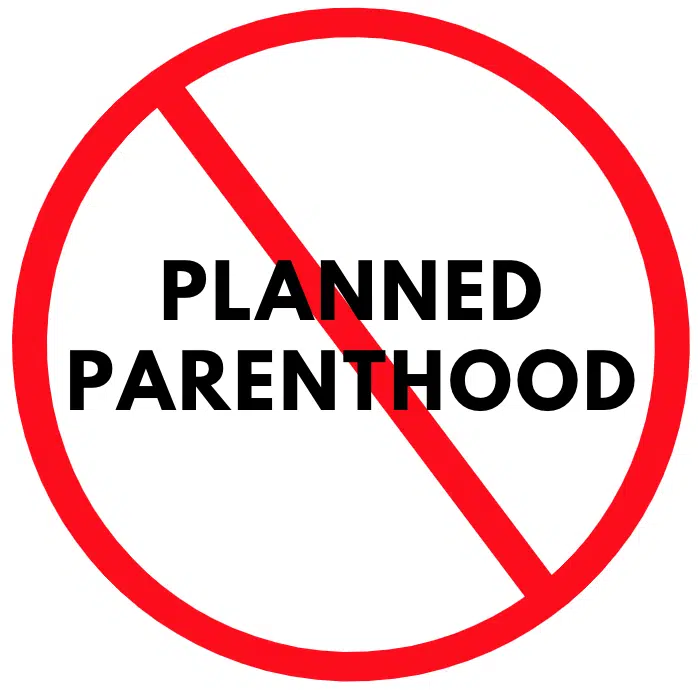
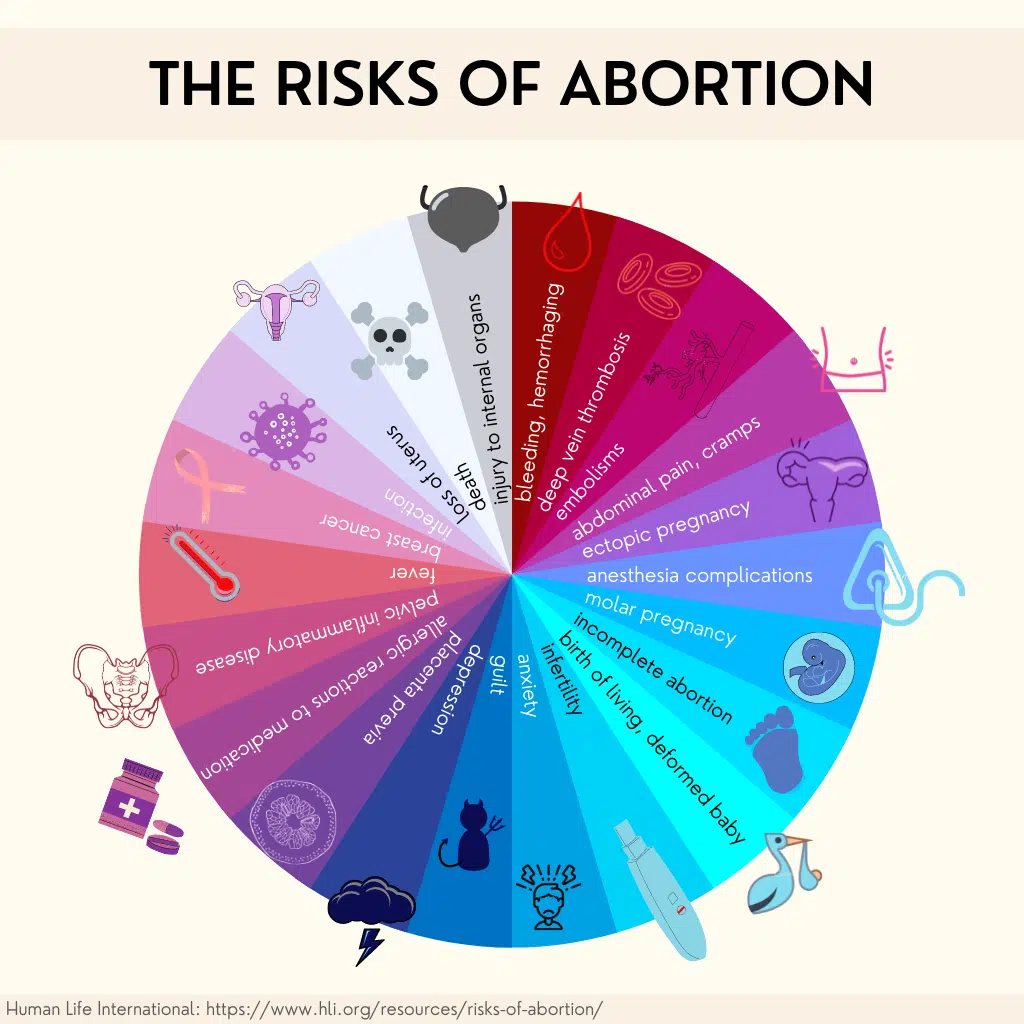
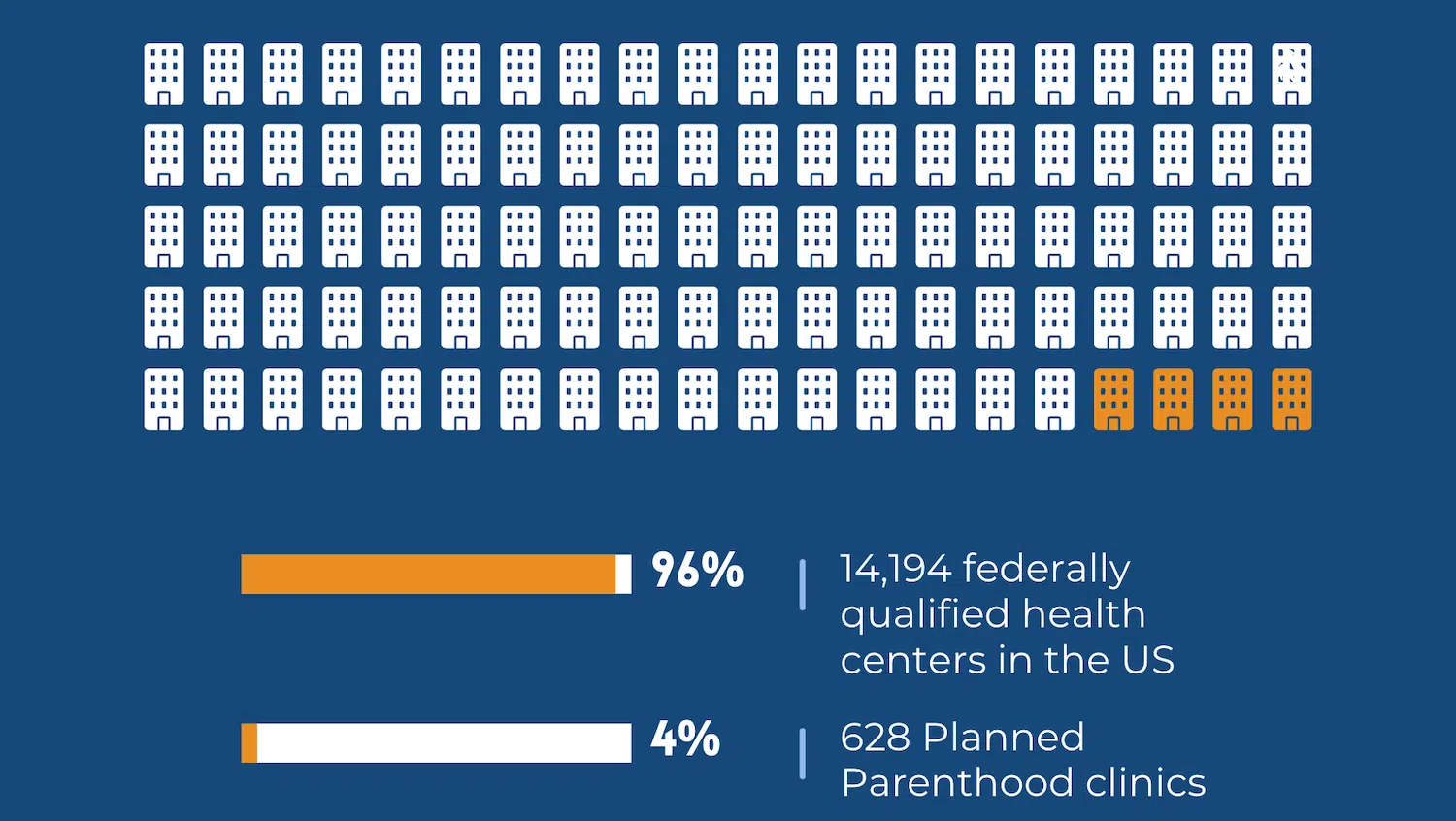
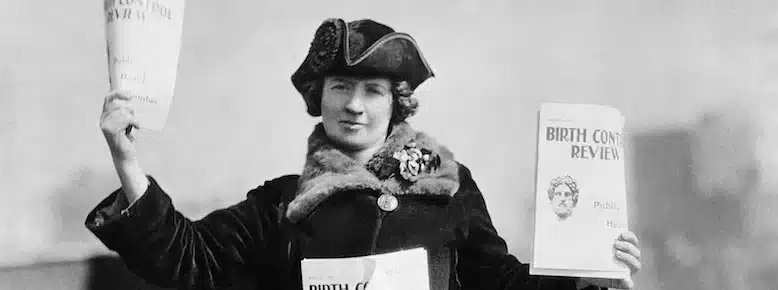












We need to stop Luciferian-planned Parenthood because it is against the Commandment of Our Creator. This is a Revolution against God. Luciferian because they make themselves like God and aping God. Many people are endangering their souls and might merit Hell forever.
THIS HAS NOTHING TO DO WITH GOD
John,
As abortion is the direct killing of innocent life, it falls under the sixth Commandment, “Thou shalt not kill.” As Moses received the Ten Commandments directly from God, the Commandments are therefore God’s, and breaking his Commands are a sin (a sin is a turning away from God). Thus, abortion is a sin against God.